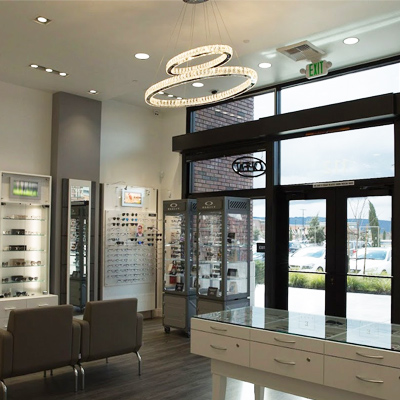
In today’s increasingly digital world, many of us spend hours a day in front of computers, smartphones, tablets, and televisions. While these tools keep us connected and productive, prolonged screen time can take a toll on our eyes. This collection of symptoms is commonly referred to as Computer Vision Syndrome (CVS), also known as digital eye strain.
What Is Computer Vision Syndrome?
Computer Vision Syndrome refers to a group of eye- and vision-related problems that result from extended screen use. It's not caused by a single factor, but rather a combination of issues related to how we use digital devices. The primary culprits behind CVS are poor ergonomics, prolonged focus, and insufficient blinking.
Common symptoms of CVS include:
Eye strain
Headaches
Blurred or double vision
Dry eyes
Neck and shoulder pain
One of the most common complaints among screen users is digital eye strain. Staring at a screen for long periods requires our eyes to maintain focus and alignment continuously, which can tire the eye muscles. Frequent switching between on-screen content and nearby objects (such as notes or documents) also increases the visual workload.
Many don't realize that not all glasses or contact lenses are made for our digital workspaces. In fact, wearing an inaccurate computer prescription can worsen eye strain and eye fatigue. Our optometrists will customize your eyewear to fit your lifestyle and digital workspace.
Dry Eye Syndrome and Screen Use
Dry eye syndrome occurs when the eyes do not produce enough tears or the right quality of tears to stay properly lubricated. When using a digital screen, we blink up to 60% less often than we do while performing other tasks. This significantly reduces the eye’s natural moisture and can lead to irritation, redness, a gritty sensation, and blurred vision. Environmental factors (like office air conditioning or ceiling fans) can compound the issue, making it even more uncomfortable for those who work on computers throughout the day.
How Blue Light Can Affect Your Sleep
Blue light from screens has been widely discussed in recent years, often as a leading cause of eye strain or sleep disruption. While blue light exposure from screens is much less intense than what we receive from natural sunlight, prolonged exposure late in the day may interfere with our circadian rhythm, the body’s natural sleep-wake cycle.
Blue light can suppress melatonin production, a hormone that helps regulate sleep. This is why many eye care professionals recommend reducing screen use before bedtime or using blue light filters in the evening - not because blue light is inherently harmful, but because of its potential to affect sleep quality.
How to Protect Your Eyes
There are simple steps you can take to reduce the effects of Computer Vision Syndrome:
Follow the 20-20-20 Rule: Every 20 minutes, look at something 20 feet away for at least 20 seconds.
Use proper screen ergonomics: Position your monitor about an arm’s length away and slightly below eye level.
Wear proper eye wear specifically prescribed for your work space: Visit your optometrist at East Bay Vision Center for a computer vision exam and to be fitted with eyewear that fits your visual needs
Adjust lighting: Reduce glare from windows and overhead lights. Use task lighting when needed.
Take regular breaks: Step away from your screen periodically throughout the day.
Blink consciously: Remind yourself to blink more often, especially during long screen sessions.
Use artificial tears: Over-the-counter lubricating eye drops can help combat dryness.
Schedule regular eye exams: Digital strain symptoms can sometimes indicate other vision problems that need correction.
Schedule Your Comprehensive Eye Exam Today
Computer Vision Syndrome is a common and often overlooked issue in our screen-dominated lives. While blue light gets much of the attention, it’s only a small part of a larger picture involving visual fatigue and dry eye syndrome. The good news is that with a few adjustments and regular eye care, you can significantly reduce your symptoms and protect your vision.
If you’re experiencing eye strain, dry eyes, or other symptoms of Computer Vision Syndrome, schedule a comprehensive eye exam at East Bay Vision Center Optometry for personalized recommendations. Visit our office in Oakland, Fremont, or Pleasanton, California. Please call (510) 268-9600, (510) 796-9600, or (925) 462-1100 to book an appointment today.









